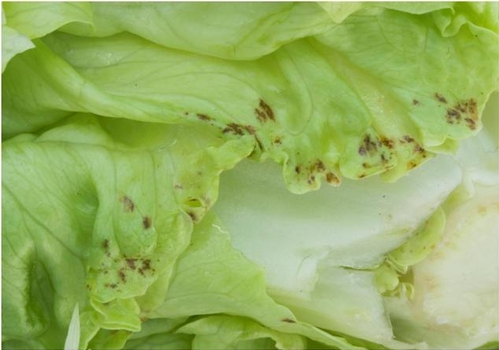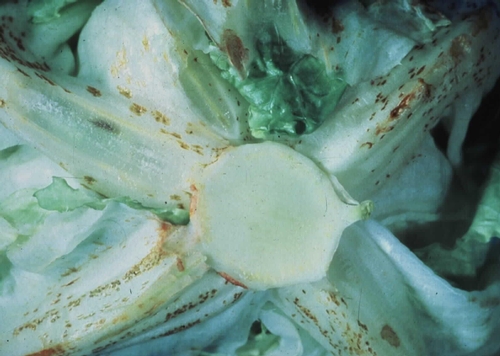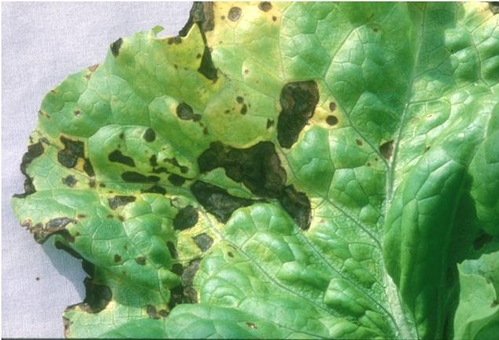- Author: Richard Smith
- Author: Steven T. Koike
The rainy and cold spring weather in 2010 is apparently having an effect on head lettuce quality in Salinas Valley fields. Symptoms appear as very small, brown flecks and spots along the margins of young leaves (photo 1). Affected leaves are usually found deep within the head. It appears that these defects are occurring in multiple iceberg cultivars in various parts of the valley. Clearly this is a physiological disorder and superficially looks similar to russet spot; however, most of the flecks do not occur on the leaf midribs (photo 2) as would be typical for russet spot. Russet spot is caused by ethylene production and can occur in mature to over mature lettuce, especially following anaerobic conditions in the field. However, in this instance, the location of the flecking along the margin of the leaf more closely indicates tipburn.
The extensive nature of the problem (from Salinas to San Ardo) and the occurrence across varieties indicates that a large-scale factor like weather could be the cause. The heavy rain on April 5 followed by cloudy, cool weather may account for the currently wide distribution of the problem. We are conducting further investigations to more closely determine the cause of this problem.
These defects are not caused by any plant pathogen. Extensive testing has shown that bacterial leaf spot, anthracnose, or other lettuce disease is not associated with these brown flecks. Bacterial leaf spot (caused by Xanthomonas campestris pv. vitians), however, is common this year and should not be confused with this physiological disorder. Bacterial leaf spot occurs on the outer leaves and results in large, black, angular lesions (photo 3).
|
Photo 1: Lettuce defects in 2010 |

|
Photo 2: Typical russet spotting of lettuce |

|
Photo 3: Bacterial leaf spot of lettuce |



